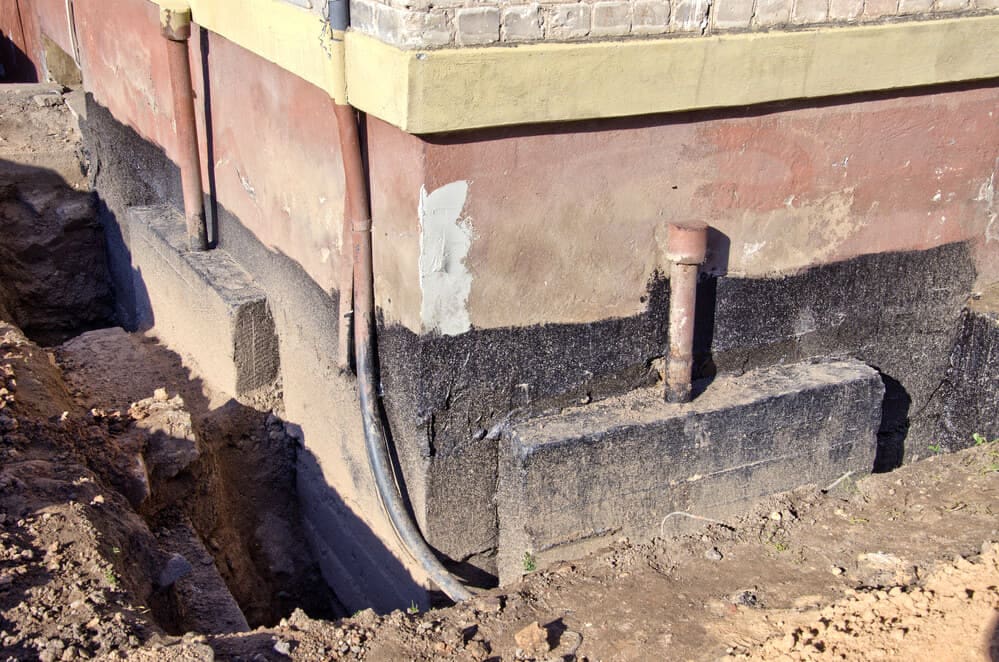
This post was originally published 9/12/19 and updated 2/13/20.
When your foundation is settling, you need piers to repair it. This is a fact that everyone in the industry agrees upon. However, some contractors recommend push piers while others rely on helical piers.
Acculevel has been repairing foundations since 1996 and we have installed both types of piers. In most residential settings, helical piers are the system we (and our customers) prefer. That being said, we are going to give you a side-by-side, apples-to-apples comparison of the methods. Your home is probably your greatest investment, and you deserve to know and, more importantly, understand what the differences between these two are.
Both helical and push piers are intended to be permanent foundation repair solutions. They are supporting structures made of steel, used to restore your home’s stability and prevent further damage. Piers can be installed inside or outside a building, and can usually be installed within a few days, depending on the quantity required.
Push piers are heavy tubes that are hydraulically driven through a foundation bracket and into the earth until they reach refusal underneath a home’s foundation. (Refusal means they cannot be pushed any farther, compared to ground resistance.) They use the building as a counterweight to push or penetrate the pier into the ground.
Once all of the piers are installed, a hydraulic jack pump is attached to each of them. Then they raise the house, aiming to reach as close to the original position as possible. Once that is accomplished, the pier columns are secured to brackets. The drawback to this method is that the pushing of the pier against your foundation can put a significant amount of stress- or even cause damage- to your foundation.
Helical piers are shafts with helical plates that make them look like giant screws. This shape allows them to be screwed into the ground instead of pushed. They’re hydraulically rotated into the ground without applying any force to your foundation, and a pressure gauge system determines when the required depth is met.
This is an illustration of a helical pier.
Once the pier is in place, a steel bracket is installed, connecting the pier to your foundation securely. Helical piers can be installed straight into the ground or at an angle, depending on the nature of the foundation damage and where the support is needed.
There are a number of factors that go into deciding which repair option is right for your home. You should work with a reputable contractor who can thoroughly assess the issues and correctly diagnose the solutions.
If your home’s structural issue is not correctly diagnosed, the piers may not be installed in the correct location or using the right method; this wastes your money while leaving you with an unsound foundation.
As a comparison: imagine you have two posts in your yard. Standing on the first is a linebacker from the Green Bay Packers, representing a 3 story office building. On the other is a toddler, and he represents a ranch house from the 1950s. The linebacker is going to push that post much farther, and to a much more secure depth. The two-year-old is going to have significantly less impact, and might actually slip and hurt himself during the process.
We have additional information to share:
In this article, we discuss the costs of pier installation.
We also review the problems that sometimes occur during installation.
If you would like more technical details, this article gives you a side-by-side comparison using specifications from pier manufacturers.
We also have a video that gives you an overview of an installation, here:
Find an experienced local foundation company, and make an appointment. Sure, this is sensible advice, but when you are considering piers, it is of critical importance. We cannot stress this enough: you need someone who can properly and thoroughly evaluate your home.
Before you sign a contract for any service, you should always verify the company is reputable, insured, and accredited by the Better Business Bureau. If you live in Indiana or the surrounding states, contact Acculevel for a free estimate. An experienced project manager will evaluate your home and recommend the best course of action for you, to keep your home strong and healthy for years to come.
[DISPLAY_ULTIMATE_SOCIAL_ICONS]